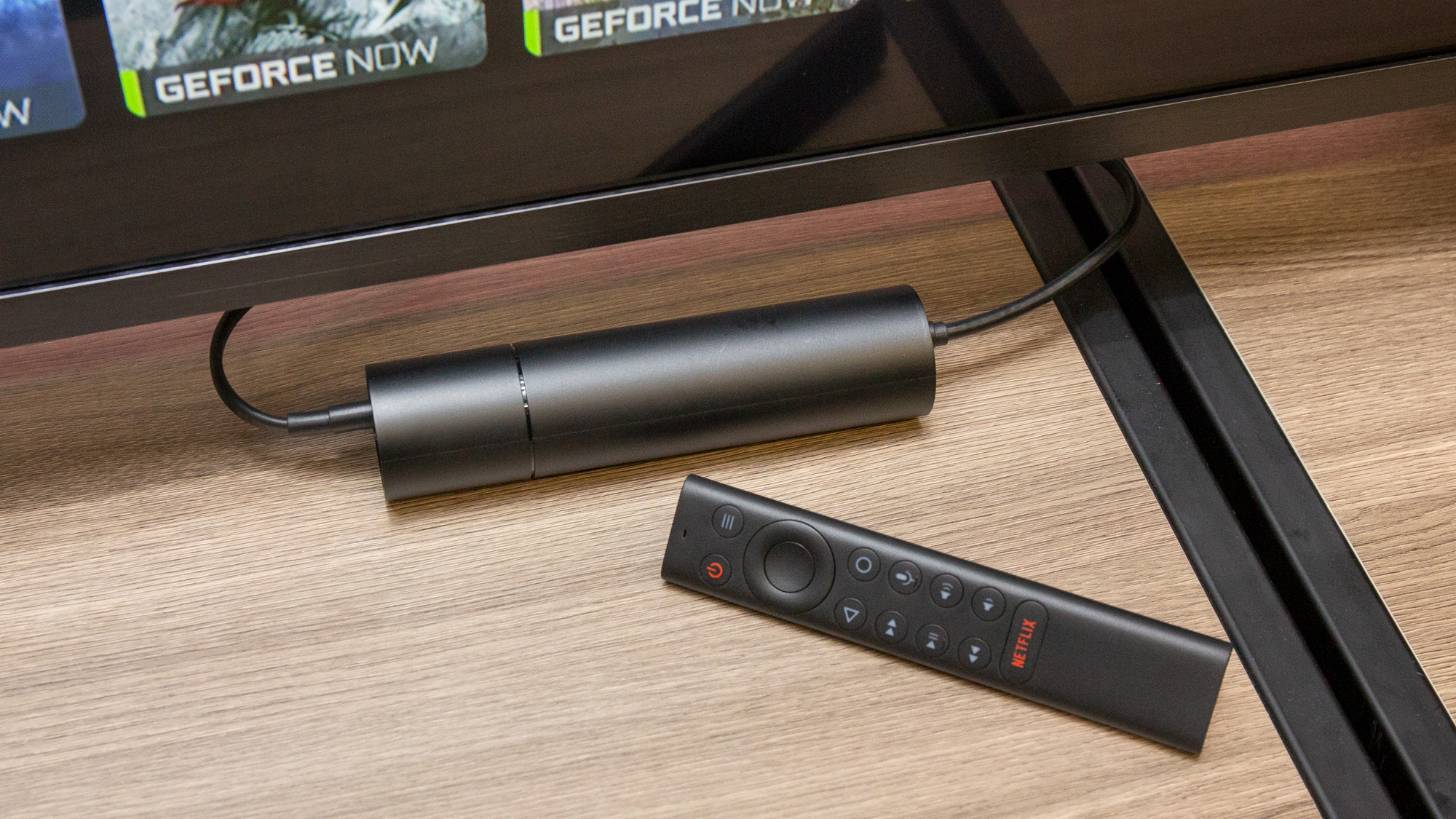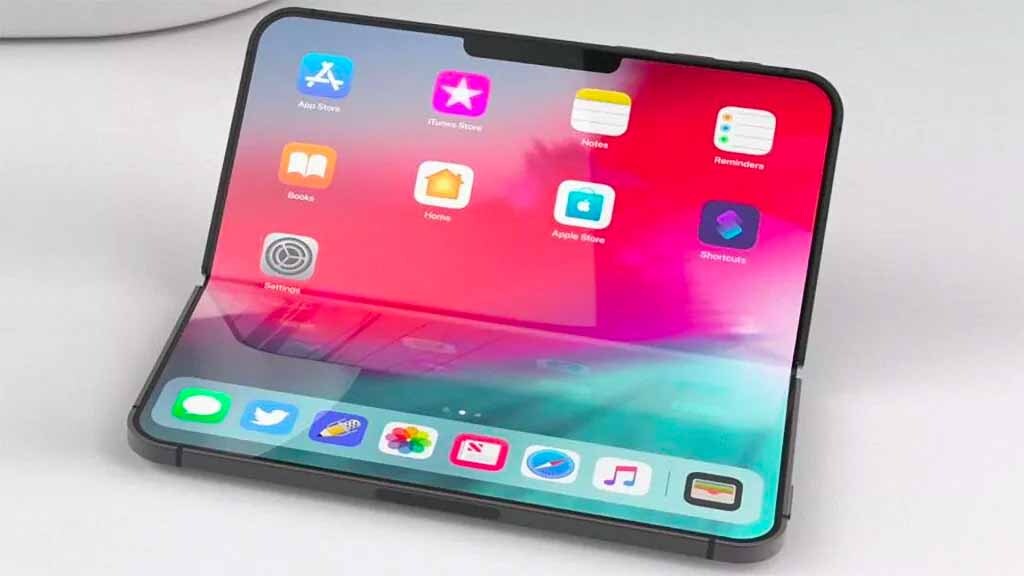Tom's Guide Verdict
The Nvidia Shield TV 2019 offers seamless game-streaming, fast-loading 4K HDR content and ambitious AI upscaling for 1080p video.
Pros
- +
Excellent game-streaming
- +
Quick rendering of UHD content
- +
Lots of great apps
- +
Attractive new design
Cons
- -
AI upscaling doesn't add that much
- -
Somewhat expensive
Why you can trust Tom's Guide
The Nvidia Shield TV has always been something of an odd duck in the streaming-player crowd. The first-gen model had a clever idea — half game console, half streaming box — but a cumbersome design. The second-gen model corrected a lot of the lingering issues, but still cost an awful lot of money (up to $300) in a market where 4K HDR streamers usually go for $50.
With the new Nvidia Shield TV ($150), the company is trying something a little different. And, after having spent some time with the new gadget, I can attest that a little different equals a lot better. Once you accept the Shield TV's strange design (let's not mince words: It's an oversize cigarette lighter), it can do a whole lot.
- The 63 best Netflix shows and TV series
- How to watch the Marvel movies in order
- Nvidia Shield TV vs. Nvidia Shield TV Pro: What's the difference?
Not only can you stream top-notch PC games from your own collection; you can also enjoy fast-loading 4K HDR content and ambitious AI upscaling for 1080p video. Then there's the Android TV OS, which offers thousands of apps, in addition to smart-home and digital-assistant compatibility.
The new Shield TV may still be a little too expensive for more casual videophiles, but for those who want to watch, game and bring their own equipment to the party, it's one of the best streaming players you can buy.
Nvidia Shield TV 2019 review: Price and release date
The Nvidia Shield TV is $149 on Amazon. It came out on October 28, 2019.
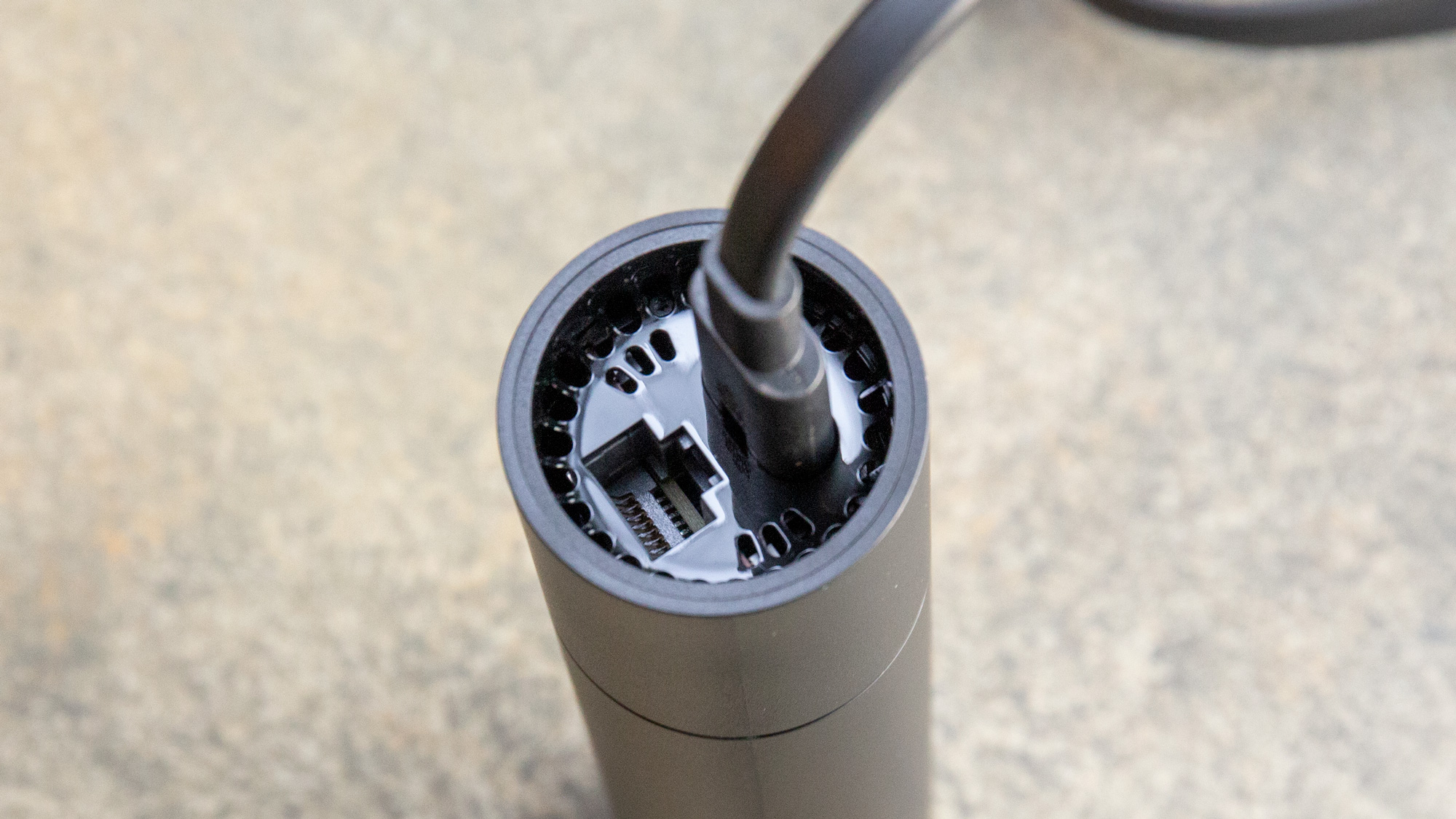
Video: 4K, Dolby Vision HDR and HDR10
Audio: Dolby Audio: Dolby Digital, Dolby Digital Plus, Dolby Atmos
Processor: Nvidia Tegra X1+
Dimensions: 6.5 x 1.6 x 1.6 inches
In the box: Shield remote, 2x AAA batteries
Smart assistant support: Amazon Alexa, Google Assistant
Nvidia Shield TV 2019 review: Design
When I first saw the Shield TV, I expected that I would hate how it looked once I got it home. Rather than a small box or dongle shape, the Shield TV is an odd black cylinder, which rests horizontally somewhere below your TV. On one end, there's a power port and an Ethernet port; on the other, there's a microSD card slot, an HDMI port and a hard reset button. (You probably won't need to use the button, but it's good to have.)
Once I got the device set up, though, I thought it looked rather cool. Since it has wires coming out of both ends, it resembles nothing so much as an oversize cable- management tube — and such a tube certainly doesn't seem out of place beneath a TV. It's also heavy and sturdy enough that the myriad wires won't hoist it up and make it dangle.
(I do have one slight quibble: Depending on where your wires come from, the Shield TV's "Nvidia" logo might be upside-down. We live in a world of compromises.)
Historically minded users may remember that the previous-gen Shield TV also came with two USB ports. It's admittedly a pain to lose these, but a) the microSD card slot works just as well for most purposes, and b) you can still get the old-style Shield TV with new Shield TV features in a product called the Nvidia Shield TV Pro ($200).
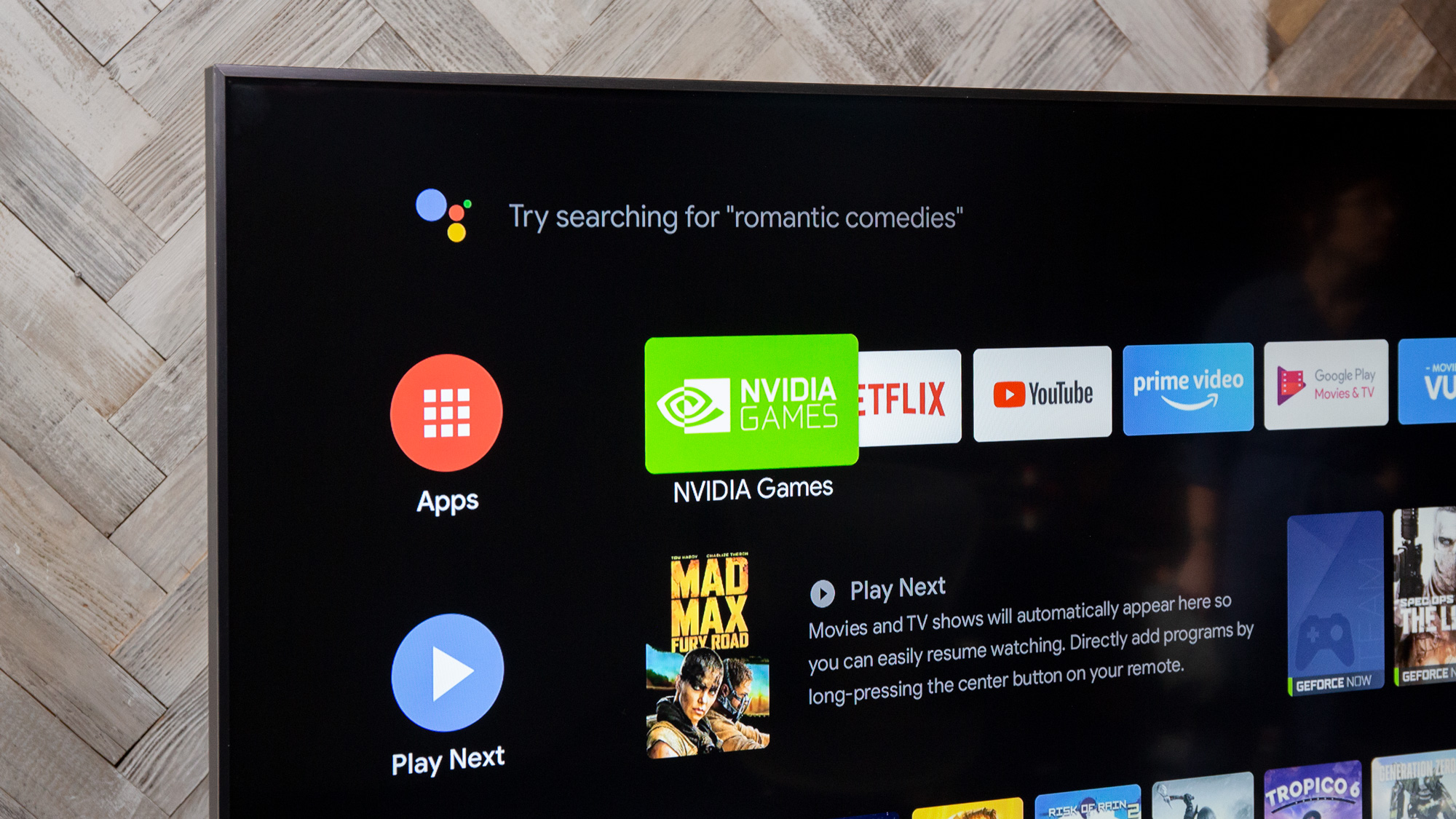
Nvidia Shield TV interface
Like previous models, the 2019 Shield TV runs on the Android TV OS. If you haven't checked out Android OS recently, though, it's worth pointing out that the interface is a lot better than it used to be. While doing so is a little cumbersome, you can customize your home screen to put the content you want front and center, and get rid of the content that doesn't interest you.
In case you haven't used it before, Android TV organizes content into rows. The first row you'll see will be all your favorite apps. Below that, there might be a whole row dedicated to Netflix, and the shows you're watching on that platform. Below that, you might get the same thing for YouTube, or games, and so forth. It's pretty intuitive, and puts very little distance between you and what you want to access.
Historically, I've complained about the Google Play Store on Android TV, which is a little abstruse, and doesn't do a good job of organizing content into browsable categories. However, a recent update has made it a lot easier to find what you're looking for — and, failing that, you can always just perform a text or voice search. It's not as robust as something like the Roku search, or as deep as the Apple TV search, but I didn't have any trouble finding apps that I was looking for.
The Shield TV also has one feature that most Android TV systems lack: Nvidia Games. Selecting this will bring you to a variety of Android games, but also to GeForce Now. While GeForce Now has been through a few different iterations, it's now a free game-streaming service. There are a handful of games available absolutely free of charge, such as Batman: Arkham City and Tomb Raider (2013), but these are mostly holdovers from an earlier experiment.
For the most part, GeForce Now is a way to stream games that you've already purchased on Steam, UPlay and similar services. The way this works is actually quite clever. You sign into your Steam/UPlay account on a remote server, which then downloads the game and streams it right to your Shield TV. It's not always easy to figure out which games work and which games won't, but the Shield will let you know when you've picked an incompatible title. The service also runs pretty smoothly, as I'll describe later.
GeForce Now's current iteration can be a little clunky, but it works extremely well, particularly if you already own a lot of games on Steam. It's come a long way since the experimental hodgepodge of GeForce Now when the Shield TV first launched.
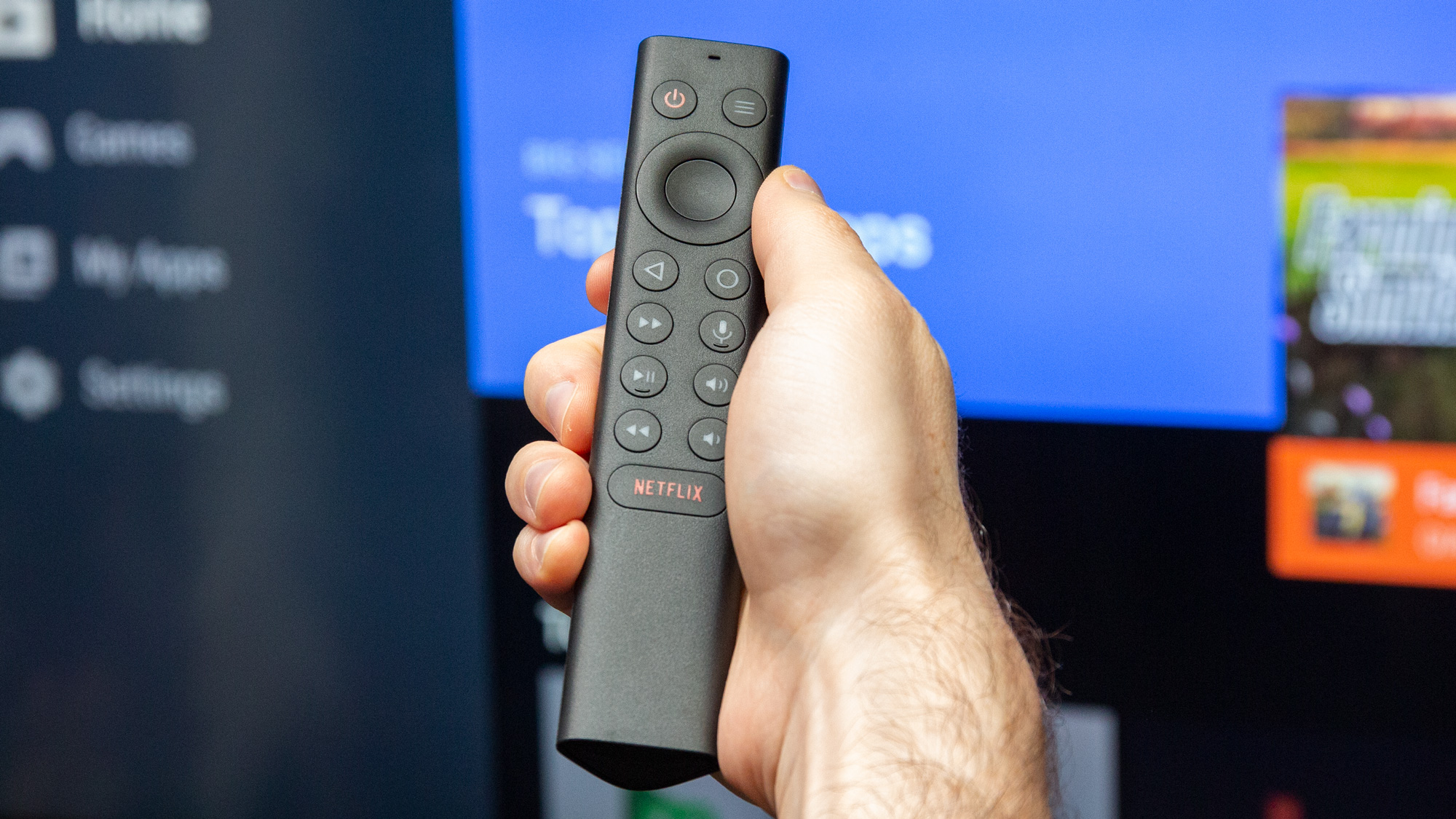
Nvidia Shield TV 2019 review: Remote
One of the biggest changes from previous Shield TV models is the new version's remote control. While older Shield TVs had remotes available, they also included controllers, which were the primary way Nvidia expected users to interact with the system.
The $150 Shield TV doesn't include a controller anymore. This isn't really a problem, since you can now connect any controller you want — other Android controllers, Xbox One controllers and even DualShock 4 controllers. Pairing is painless, and I imagine that most people interested in buying a Shield TV in the first place already own at least one compatible peripheral.
But the Shield TV does come with a remote control, and it's a complete redesign. The new remote control is a black triangular prism, with two rows of circular buttons down the front. You get circular direction controls, with a confirm button in the middle, in addition to all the standard media controls (play/pause, rewind, fast-forward, etc.). There's also a dedicated button for Netflix at the bottom, which isn't necessary, but doesn't do any harm, either.
One cool feature of the remote is that it will automatically illuminate when you pick it up, so it's easy to see in a dark room. But for some reason, the buttons are quite dark themselves until the lighting kicks in, which makes the illumination something of a necessity, even in a moderately bright room. It probably would have been easier to just make lighter-colored buttons. The remote also operates on two AA batteries: a step up from the coin-cell battery in previous Shield TV remotes, but a rechargeable peripheral would still be nice.
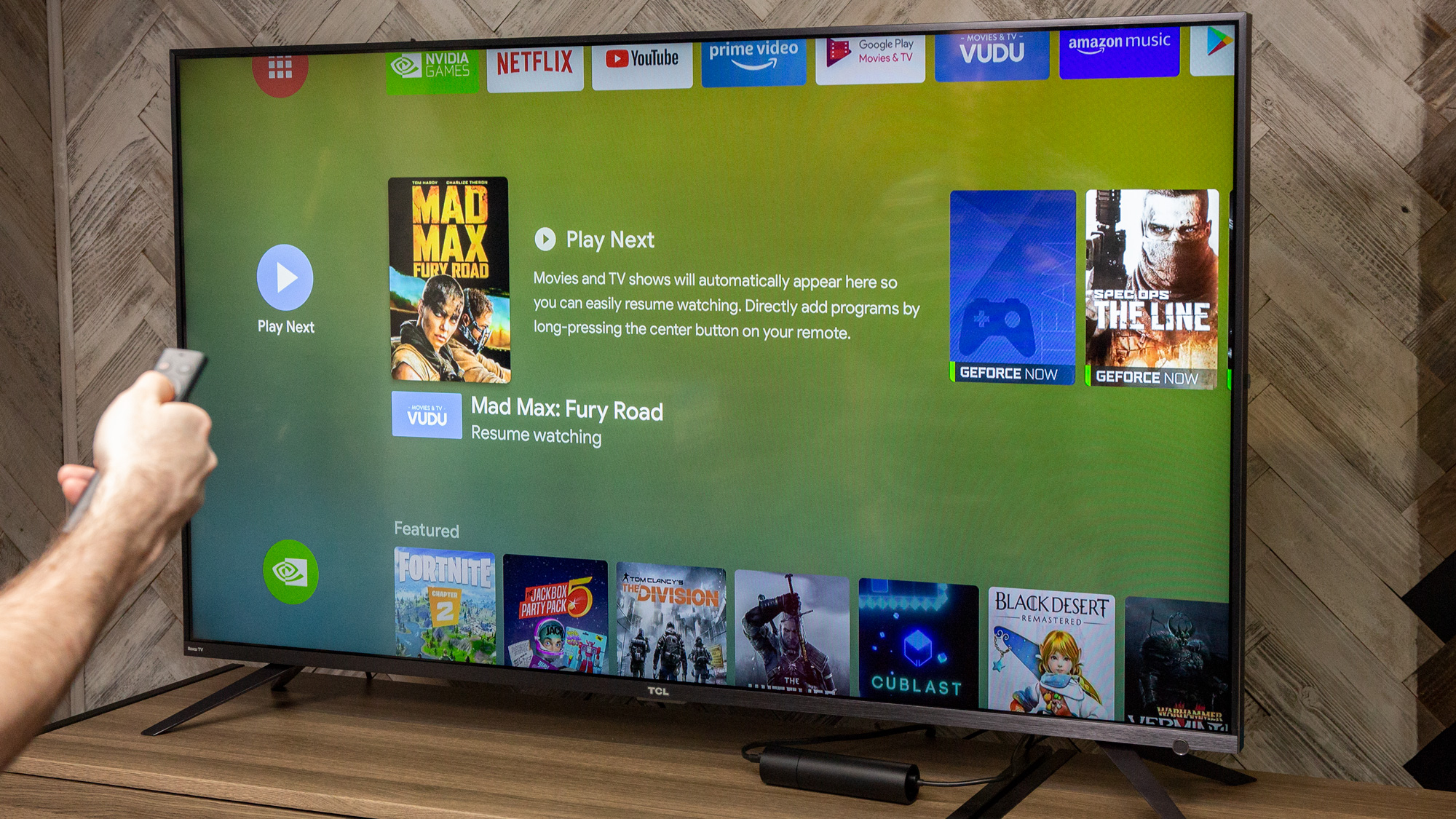
Nvidia Shield TV 2019 review: Content and apps
Android TV has access to thousands of apps — although like most app stores, there's a lot more chaff than wheat. At the very least, you'll be able to get just about every major channel, including Netflix, Hulu, Amazon Video, Sling TV, PlayStation Vue, Spotify, Pandora, Vudu, YouTube and just about every channel-specific streaming app out there.
In fact, Shield TV has a history of getting new apps before they hit the rest of the Android TV ecosystem. That was the case with Amazon Video a few years ago, and it's the case with the discrete Amazon Music app now. The only big thing missing right now is Apple TV, and who knows if that will ever make its way to a Google platform? But if it does, the Shield TV may very well be one of the first systems to get it.
It's worth noting that you can also program routines and even control certain smart-home gadgets through the built-in Google Assistant. If you prefer Alexa, you can also set up the Shield TV to work with commands from Amazon's digital assistant, including powering on, selecting content and pausing shows. You can't use every smart-home device — for Samsung Smart Hub products, you need a USB dongle, for example. But having access to a full-featured Google Assistant is pretty handy all the same.
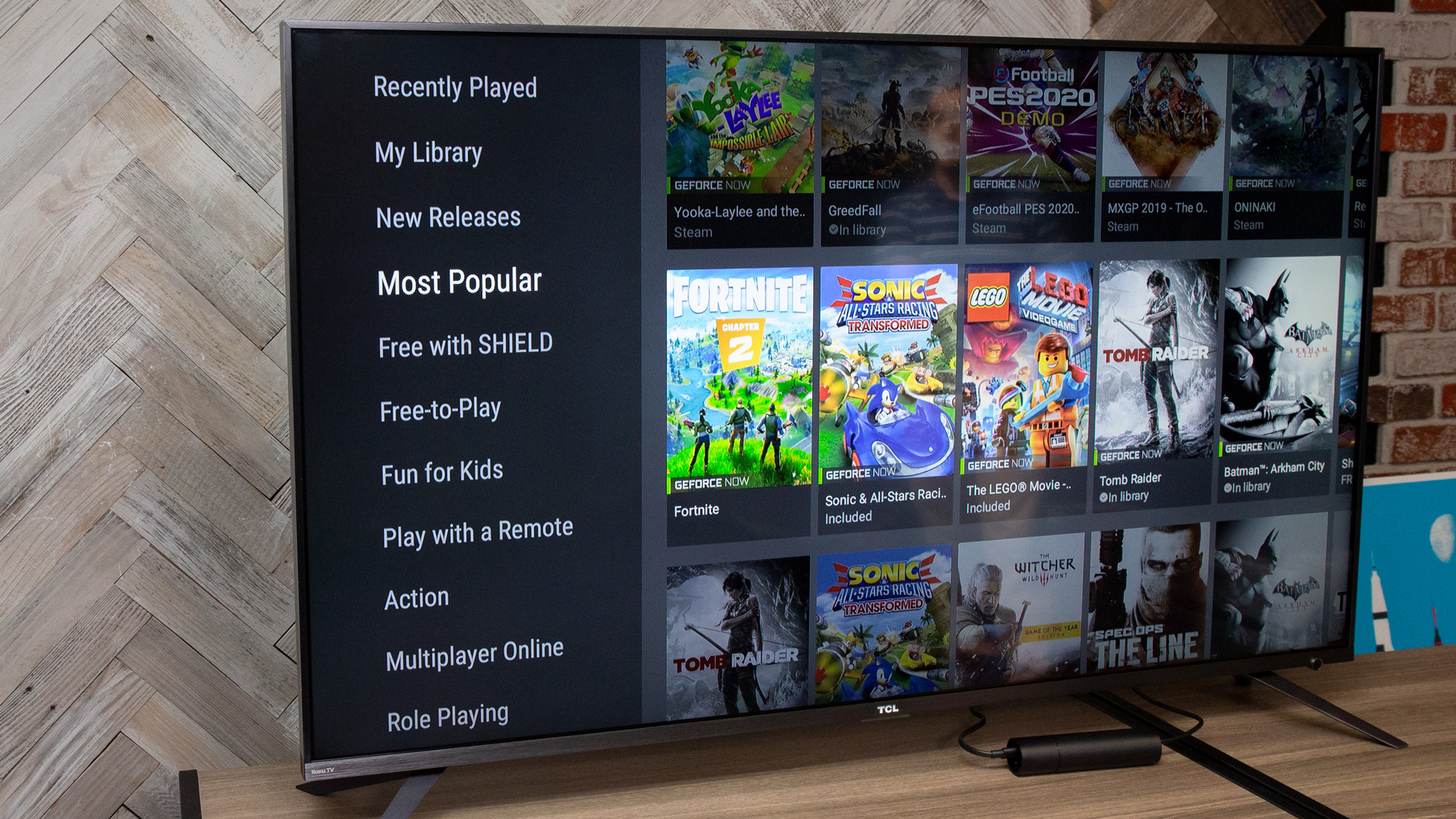
Nvidia Shield TV 2019 review: Performance
The Shield TV is a powerful device, sporting a Tegra X1+ processor, 2 GB RAM, 8 GB storage, and support for Dolby Vision and Atmos. As such, there's no reason to discuss video performance in great detail. The Shield TV loads and buffers 4K HDR content very fast — much faster than $50 competitors like the Roku Streaming Stick+ or the Amazon Fire TV Stick 4K. If you've got fast Wi-Fi, the Shield TV offers 802.11 ac support; otherwise, you can plug in an Ethernet cable.
What's more interesting is what the Shield TV does with all its extra power. Nvidia has programmed in a proprietary form of AI upscaling. Without going into too much detail about how it works, the Shield TV employs an algorithm to make 1080p pictures look more like 4K images, both in motion and when paused.
You can set this upscaling to Low, Medium or High, depending on how aggressive you want to get, or you can turn it off entirely if you don't trust it. In my experience, I found it worked pretty well, although it did occasionally change a picture's color for no real reason (a red sign became orange in Spider-Man: Into the Spider-Verse, albeit with sharper text). I also found that I didn't perceive a difference once a movie or TV show had been in progress for a while. Comparing still images was fun, but I'm not sure I would have noticed, had I not already known I was toying with algorithms.
What's impressive, though, is how the Shield TV handles games. As stated, the Shield TV streams games you already own from a remote server; you just provide the controller or keyboard. (You can also stream any game you want from a server in your own home, but how well that works is dependent on your own hardware and Internet connection.)
When I set up the Shield TV at home, it wasn't situated anywhere near my router, so I had to make due with Wi-Fi, which provides about 40 to 45 Mbps on a good day. I loaded up GreedFall, where I happened to have a save just before the final boss. Without spoiling anything, the last fight in the game is a fairly tough one, which requires a lot of dodging and split-second tactical decisions. If the Shield TV lagged even a little bit, I'd have been fileted well before I could quaff a healing potion.
But the Shield TV didn't lag at all. The game streamed at 1080p resolution with a frame rate that seemed far in excess of 30 fps. (The software didn't give me an exact number, but it was almost definitely somewhere between 30 and 60.) I had similar experiences with Tomb Raider, Spec Ops: The Line and The Witcher III: Wild Hunt. It's an incredibly impressive piece of tech, and I was amazed that I could play a full-fledged PC game in my bedroom without having to drag my whole gaming rig in with me.
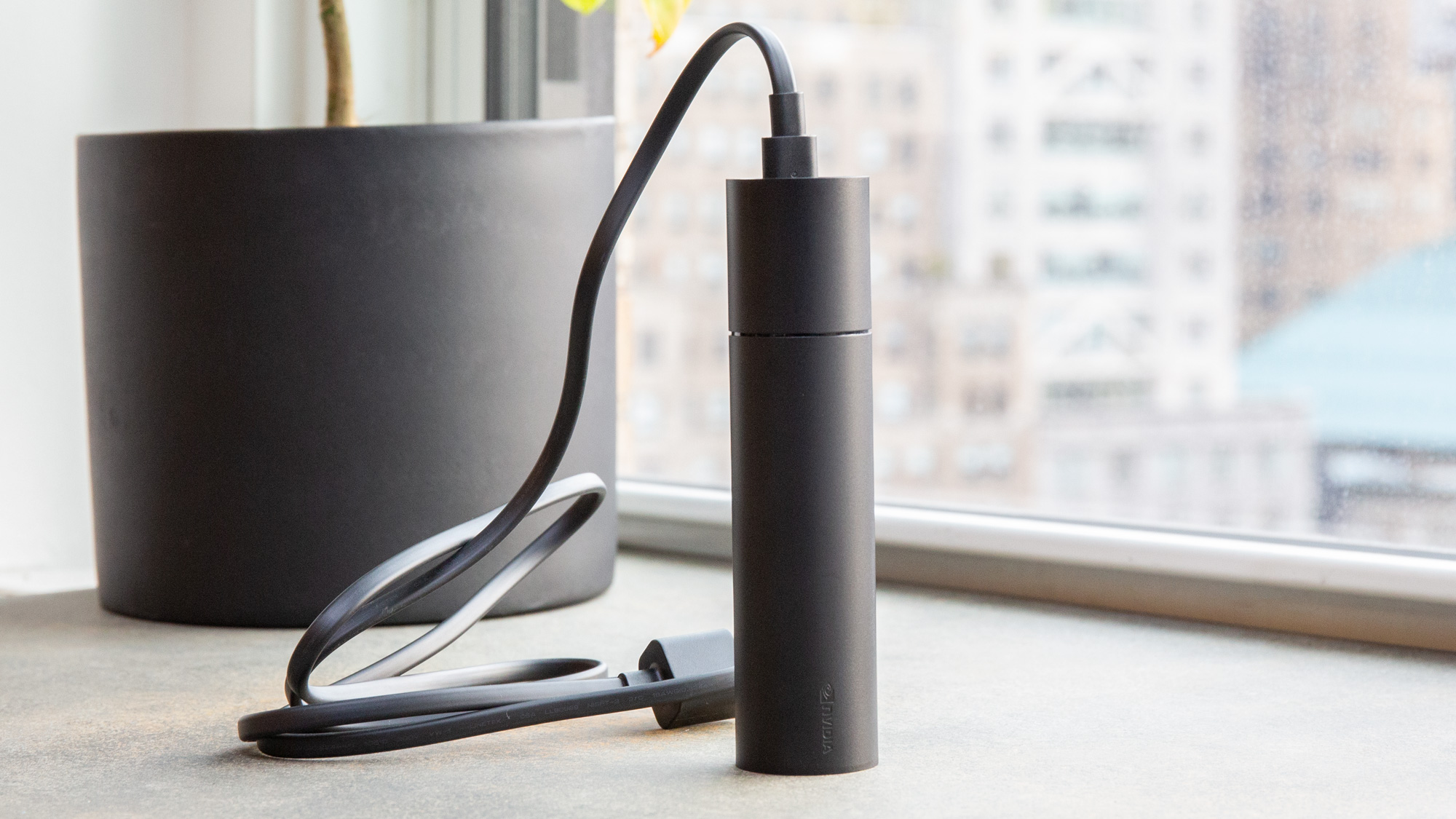
Nvidia Shield TV 2019 review: Bottom line
The Shield TV (2019) looks a lot different than it did a few years ago, and it doesn't come with nearly as much stuff. (Although, again, the Nvidia Shield TV Pro still has all the ports, and you can always buy a controller separately.) And yet, I think it's a stronger product for all that. Asking $150 for a streaming device is much more reasonable than asking $200 or more, and the new Shield TV still does just about everything it did before. Some things, it does even better.
From its ambitious AI upscaling to its surprisingly solid game streaming, the Shield TV is definitely aiming for a gaming/streaming audience rather than the everyday binge-watcher. But I think it provides just about everything those gamers and streamers would need, at a much more approachable price than before. Just grab your favorite controller, and you're good to go.
- Apple TV 4K vs. Nvidia Shield TV: Which streaming device should you buy?
Marshall Honorof is a senior editor for Tom's Guide, overseeing the site's coverage of gaming hardware and software. He comes from a science writing background, having studied paleomammalogy, biological anthropology, and the history of science and technology. After hours, you can find him practicing taekwondo or doing deep dives on classic sci-fi.
